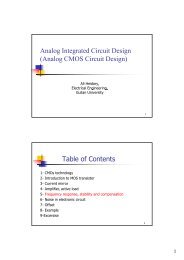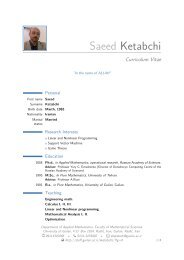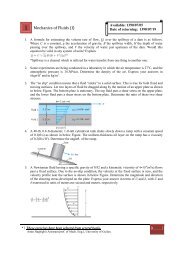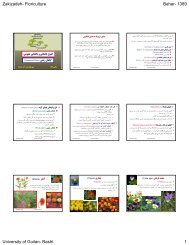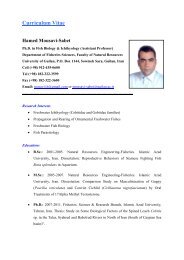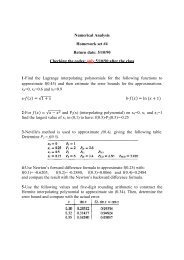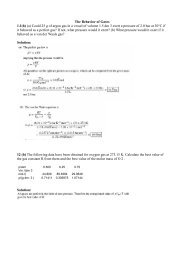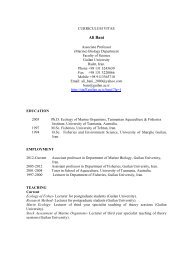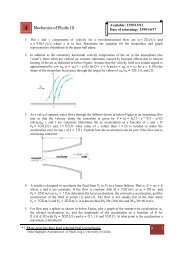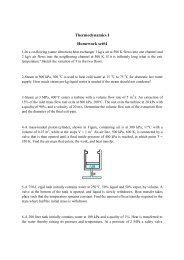Medical Tourism in Developing Countries
Medical Tourism in Developing Countries
Medical Tourism in Developing Countries
- No tags were found...
You also want an ePaper? Increase the reach of your titles
YUMPU automatically turns print PDFs into web optimized ePapers that Google loves.
158 ● <strong>Medical</strong> <strong>Tourism</strong> <strong>in</strong> Develop<strong>in</strong>g <strong>Countries</strong>a lag, after the patient has had follow-up care with a physician at home?These are all legitimate questions, born out of circulat<strong>in</strong>g rumors of <strong>in</strong>competentdoctors or sub-par facilities. 79 Some of these questions are raised ona website (www.bumrungraddeath.com) ma<strong>in</strong>ta<strong>in</strong>ed by a griev<strong>in</strong>g fatherwhose 23-year old son died <strong>in</strong> 2006, after treatment <strong>in</strong> Thailand. While thecourts are decid<strong>in</strong>g whether Bumrungrad Hospital was negligent, the fatherhas posted recommendations and alerts for potential patients urg<strong>in</strong>g themto check their legal rights and dest<strong>in</strong>ation country malpractice histories.LDCs promot<strong>in</strong>g medical tourism must make adjustments to their legalsystems <strong>in</strong> order to address issues of concern to <strong>in</strong>ternational patients.Obstacle V: Entry Requirements and TransportationIf the Indian government had cumbersome visa restrictions, the Americanpatient would be less likely to go. If the Thai national airl<strong>in</strong>e made threerefuel<strong>in</strong>g stops on its way from London to Bangkok, the English patientwould probably go elsewhere for his Lasik surgery. Entry requirements andvisas translate <strong>in</strong>to government-imposed barriers to the <strong>in</strong>ternational tradeof medical services. Airl<strong>in</strong>e routes and prices of travel also translate <strong>in</strong>togovernment-imposed barriers s<strong>in</strong>ce transport <strong>in</strong>dustries <strong>in</strong> LDCs are largelygovernment owned and controlled.These are obstacles to the development of medical tourism that arenational <strong>in</strong> orig<strong>in</strong> and, therefore, their elim<strong>in</strong>ation requires appropriatesteps on the part of national authorities. Unlike <strong>in</strong>ternational obstacles suchas the lack of <strong>in</strong>surance portability, domestic obstacles are easier to addresss<strong>in</strong>ce they are largely under domestic control.Entry RestrictionsIn an exercise of their sovereignty, all countries control their borders. Theydo so because of security concerns, illegal flow of manpower and smuggl<strong>in</strong>gof goods. Border regulations limit numbers of cross<strong>in</strong>gs and set eligibilityconditions. In order to assess who enters the country and for what purpose,governments require <strong>in</strong>formation such as that provided on a visa requestapplication. The successful applicant receives an entry permit for a specificpurpose that <strong>in</strong>cludes tourism, study, or employment.Embassies and missions abroad process such applications <strong>in</strong> cooperationwith home authorities. The efficiency with which such paperwork is processedand the breadth of <strong>in</strong>clusion of <strong>in</strong>ternational applicants has an effecton the number of visitors. Among these are <strong>in</strong>ternational patients who comewith the specific goal of purchas<strong>in</strong>g services. There is an <strong>in</strong>verse relationship





